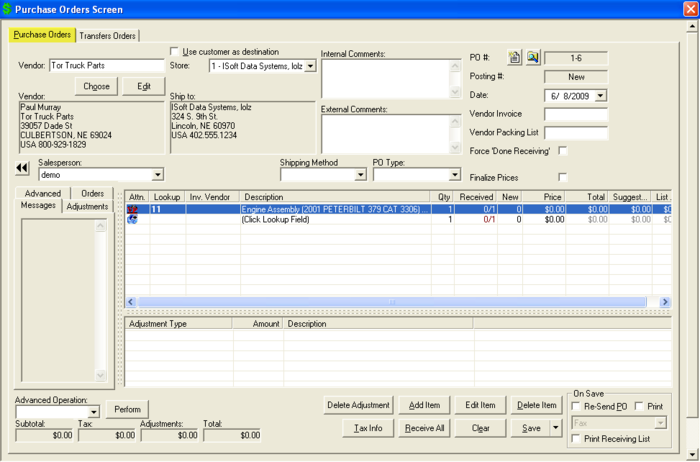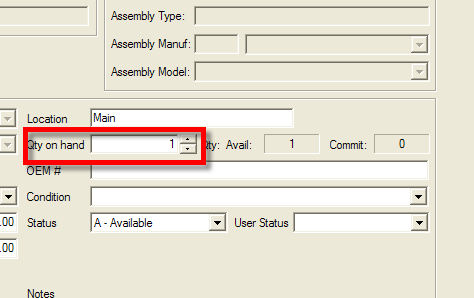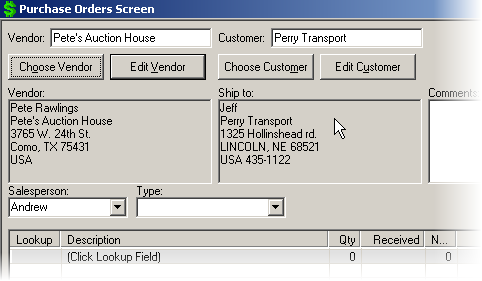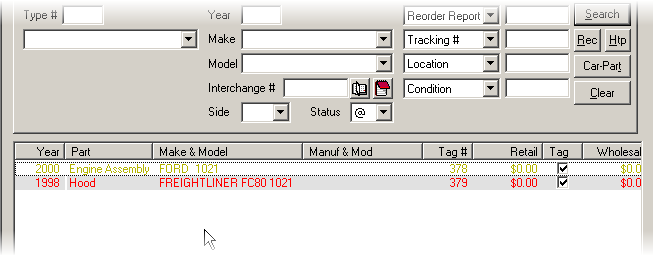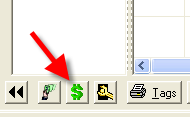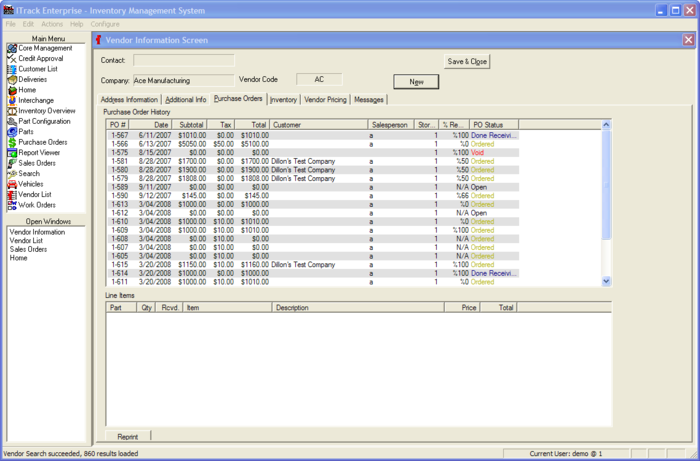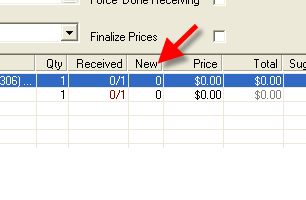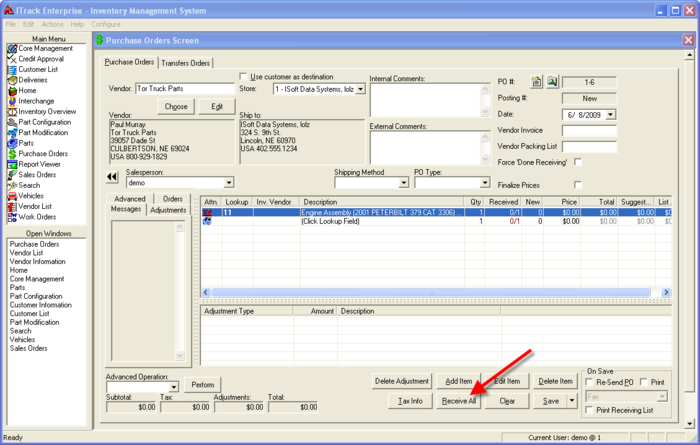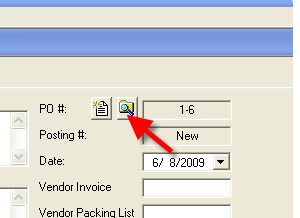ITrack/Enterprise/Purchase Orders Screen
Purchase Orders
The Purchase Orders Screen allows you to create purchase orders and assign them to vendors and customers you already have entered into ITrack Enterprise. To open this screen, click on Purchase Orders in the Main Menu.
| Tip |
| If you are ordering a part because you want to have it in stock, not for a specific customer, use the receiving store as the destination. |
Before you can create a purchase order, you must have already entered the part you are ordering into your inventory. When you are entering a part into inventory, you can set the minimum quantity your company should have in stock at any give time, allowing you to do suggested ordering using the Inventory Overview Screen.
You are now ready to create a purchase order. Entering a vendor can be done in a couple different ways.
- Type the entire name or partial part of a name into the Vendor field. If there is only one vendor with that name, the information will automatically fill in when you hit the tab key on your keyboard. If there is more than one with the name, the Vendor List Screen will open so you can select the correct vendor. Double click on the one you want. The information will transfer over to the Purchase Orders Screen.
- Type the vendor number into the Vendor field and then hit the tab key on your keyboard and that vendor's information will be automatically filled in. If there is only one vendor with those digits, the information will automatically fill in when you hit the tab key on your keyboard.
- Type in the last digits (you can choose how many, we recommend the last four) of the vendor's phone number. If there is more than one with the same last digits, the Vendor List Screen will open so you can select the correct vendor. Double click on the one you want. The information will transfer over to the Purchase Orders Screen.
- Click the Choose Vendor button to open the Vendor List Screen, then conduct a search and double click on the correct vendor. The information will transfer over to the Purchase Orders Screen.
Entering a customer works the same as entering a vendor.
Now, we need to select the part for the purchase order. There are several ways to add parts to the Purchase Orders Screen. You can click in the lookup field and perform a smart search, which generally allows searching inventory by any of the following:
- Part SKU Number
- Tag number
- Part Model name (eg. “RTLO 13610B”)
- OEM Number (eg. “12345”)
For more information about the smart search, see the Search Screen.
Alternatively, you can click the Add Item button near the lower right corner of the screen. This will bring up the Search Screen. Conduct a search to find the part. Parts that are out of stock will appear red, and parts that are in stock but below your minimum quantity will appear yellow.
Double click on the part or click the Purchase Order button to add the part to the purchase order. You may also multi-select parts by holding down the Ctrl button on your keyboard and clicking on the item to sell, then click Purchase Order.
| Tip |
| The Purchase Order button is a small icon of a green dollar sign. |
Now you can enter in the quantity you want to order, price, and other details about your order.
When you are finished adding items to the purchase order, click the Save button.
If you want to make sure your purchase order saved, you can view it by clicking on Vendor List from the Main Menu. Now conduct a search for your vendor and double click on it. Click on the Purchase Orders tab to view purchase orders for the vendor.
Partial Receiving
Partial receiving is when only part of the order quantity has been received. Possibly this is because the vendor is shipping items in 2 shipments, or possibly they simply ran out of stock to fulfill the order. Whenever new quantity is received on a PO, it creates a new posting. A PO can have as many postings as you want.
To partially receive a PO, type in the number of items you have received in the New column of the purchase order. The Received column will now reflect the number received. Be sure to click Save when you are done to keep your changes.
If you have only received part of a purchase order but still wish to close it, check the Force 'Done Receiving' box in the lower right corner. Now when you click Save, the purchase order will still close even thought the entire order is not received.
Receive All
To receive all parts from a purchase order, click the Receive All button. Now ITrack will show that you have received all of the items in that purchase order.
Receiving items will not allow any of the item types to be changed, but you will still be able alter price and quantity. Once the prices and quantities are verified as correct, then clicking the 'Finalize Pricing' checkbox will disable changes to those fields.
| Tip |
| Once you finalize pricing, any adjustments that you have added will take effect. |
Be sure to click Save when you are done to keep all of your changes.
Finalizing Purchase Orders
Once you have obtained the items in a purchase order, you can mark the purchase order as "Done Receiving". POs that are done receiving cannot add new items or create new postings.
When Accounts Payable gets the invoice from the vendor, they should reopen each posting, verify (and possibly correct) pricing and quantities. After doing this, they should mark the posting as approved. Approved postings cannot have anything about them edited. For info on how to load a PO or posting, see the next section.
Viewing Saved Purchase Orders
To open an old purchase order, click next to PO # in the Purchase Orders Screen. Enter the purchase order number you wish to open and click OK. This will open the specified PO at the specified store and start a new posting on that PO.
Viewing Old PO Postings
Sometimes, when a PO is received in multiple shipments, a PO will have more than one posting, each one representing one of the times a user received quantity into inventory. If you wish to load a historical posting, click the posting # field. From here, the user can edit prices and received quantities on that historical posting, possibly correcting any inaccuracies.
